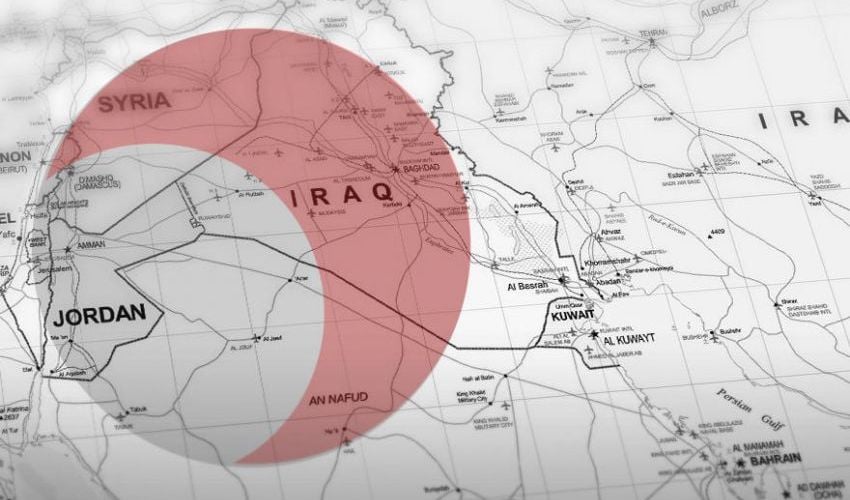
(alkhaleejonline.net)
In 2004, Jordan’s King Abdullah II used the term “crescent” to warn against the expansion of Iranian influence in the Middle East. This was later picked up by then Egyptian President Hosni Mubarak who said, in an interview with Al-Arabiya, that Shias in Iraq and across the Middle East “are more loyal to Iran… not to the countries they are living in.”
However, what King Abdullah II had meant was the possible disruption of the balance of power in the region. He never used the word “Shia” in a sectarian sense; he was rather referring to the political alignments and violent bloodshed that might result from such divides.
Lately, the same kind of “alarm” has being sounded by the Chief of Staff of the Jordanian Army, General Mamoud Freihat, who highlighted the dangers of an “Iranian Belt” which could create a territorial link between Iran and Lebanon via Iraq and Syria. In a recent interview with BBC Arabic, Freihat expressed Jordan’s concerns about the possible establishment of a “land belt,” or contiguous territory, between Iran and Lebanon.
Martin van Creveld, a distinguished military historian, once noted: “In the future, war will not be waged by armies but by groups whom today we call terrorists, guerrillas, bandits and robbers, but who will undoubtedly hit upon more formal titles to describe themselves.” Since that statement was written, the Middle East has indeed seen a huge proliferation of proxy wars, stemming from various non-state actors.
Sunnis in the Middle East look at what is happening (especially in Mosul in Iraq, and Aleppo and Raqqa in Syria) as a strategic war designed by Iran to secure a “Shia corridor” or an “imperial bridge” in the region. They also point to the “demographic change” being “engineered” to transfer the Sunnis out of their areas, whether in Syria or Iraq. To Shias, it is nothing but a battle against terrorism.
The “Shia crescent” brings the violence of the Sunni-Shia battles into our daily lives in new, unsettling ways, as if such terms (the crescent, corridors, the bridge, and so forth) are becoming a self-fulfilling prophecy. But measuring the phenomenon hardly tells us whether there is truth about its reality.
Those of us who take regional peace seriously face some important questions, among which is whether the policy findings emerging from statistical research still apply: that as national incomes increase, the risk of war declines. However, the Sunni-Shia divide predates the rise of nation-states or when conflict between Saudi Arabia and Iran started to surface. Thus, if fundamental policy differences among capable nations arise, then warfare over ideology or religion can also be resurrected.
Maybe this is what King Abdullah II meant around a decade ago: that even if traditional geopolitical competition still plays a role, one has to take into account a significant and fluctuating number of non-state actors, motivated by various ideological or religious causes, mutating into new hybrid threats, and frequently shifting alliances among them.
But is war not a quintessential undertaking of the nation-state? Indeed, the relationship between the two was expressed in Professor Charles Tilly’s famous line, “War made the state, and the state made war.”
The two primary regional powers (Saudi Arabia and Iran) continue to project their geopolitical influence using their interpretations of Islam as instruments of foreign policy. The danger thus lies in the politicization of sectarian identities: such as picturing groups, like the Alawites in Syria and Zaydis in Yemen, to be orienting into the Iranian orbit and/or the Shia establishment, although these “new” Shia were previously considered heretics by Sunnis and most Shias themselves.
The Arab world has already decided to characterize Iraq, for instance, as an Iranian client-state; the Shia constituents as Iranian proxies; and the Alawites and Houthis as subsets of Shia. Whether Iran has influence over the region, such classifications and simplistic narration are ironically becoming instruments serving the continuation of wars. In fact, the “crescent” is helped by the way the Arab world has historically treated the Shia communities as threats to the regimes, not as citizens with national identity, natural rights and responsibilities.